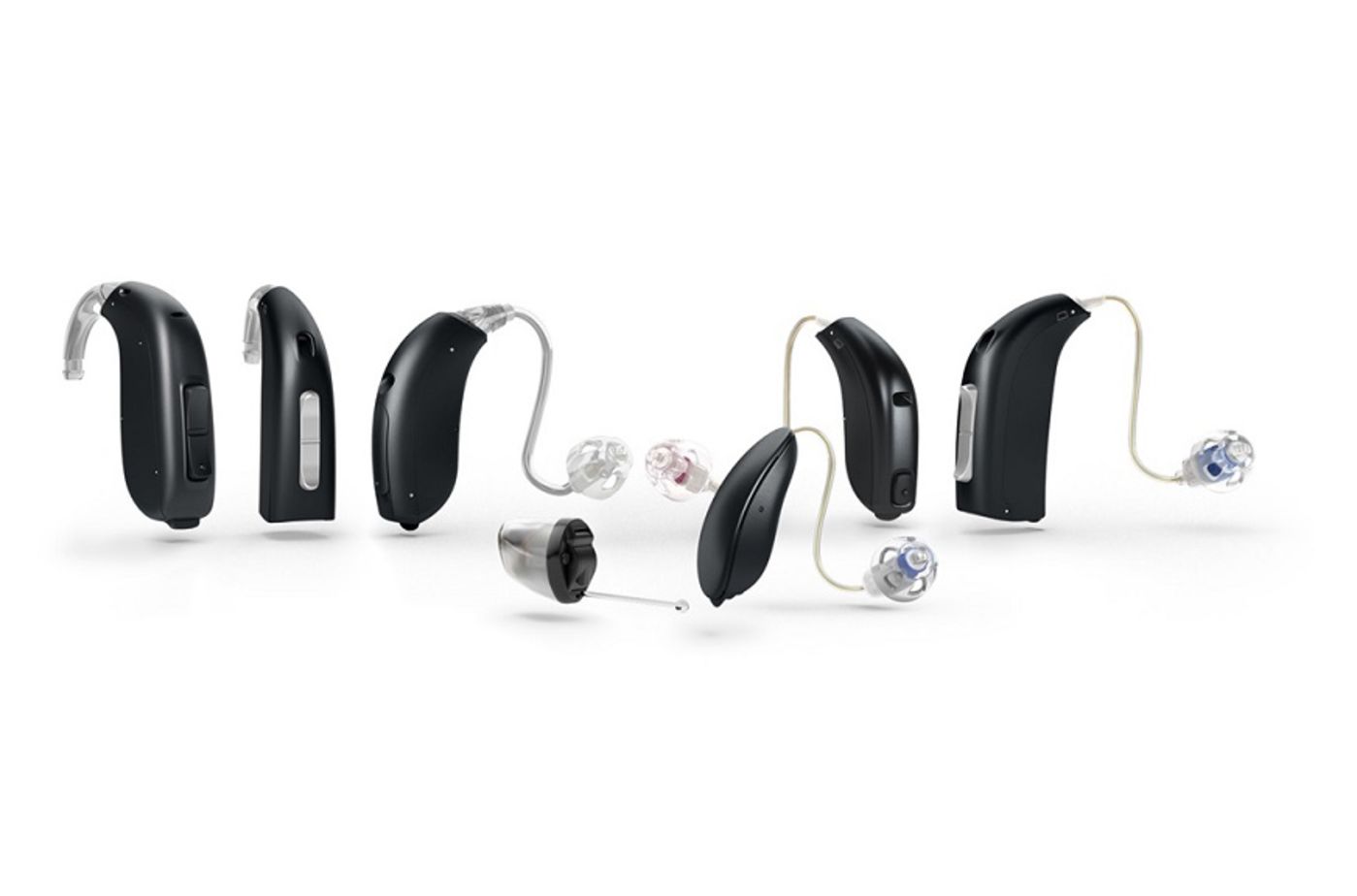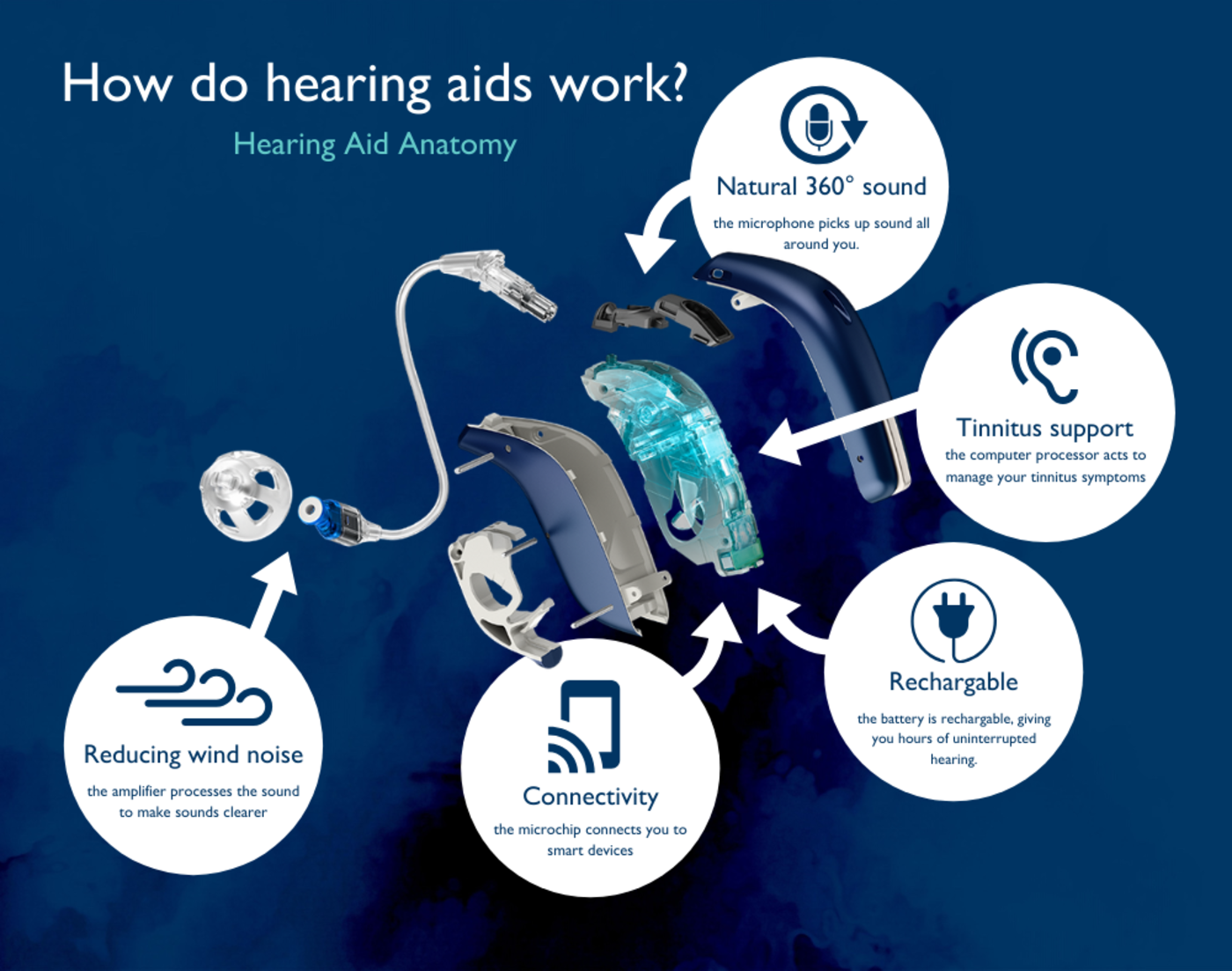What is a hearing aid, and how does it work?
A hearing aid is a small electronic device which sits neatly in or behind the ear and is worn by people with hearing loss to help them hear sound more clearly. Hearing aids work to adjust sound, making speech clear and audible to the wearer. They can also reduce the impact of tinnitus and background or environmental sound.
The latest hearing aids are incredibly complex miniature computers. They are programmed accurately by your Audiologist to increase the volume of surrounding sounds to a comfortable level. This enables you to hear sounds like you used to. As well as increasing the volume of sounds, hearing aids automatically detect the environment that you are in.
They make adjustments to reduce background noise, helping you focus on speech, and keeping loud sounds to a comfortable level. This means you can enjoy wearing hearing aids, without having to fiddle with the volume or programme.
While hearing aids cannot reverse hearing loss, studies have shown that they can help to slow the progression of hearing loss, and can significantly improve the hearing sensitivity and quality of life for those affected by hearing loss.

How Hearing Aids Work
There are two main types of hearing aids – analogue and digital – which work very differently.
Analogue Hearing Aids
The first ear-worn hearing aids produced were analogue. Analogue hearing aids made all sound equally louder, but often not clearer.
Analogue hearing aids are a thing of the past now and have been superseeded by Digital Hearing aids where a tiny computerised device and microchip can give you a natural 360 degrees sound, cut through the noise and even connect to your smart devices.
Digital Hearing Aids
Digital hearing aids have been available for approximately 15 years. This has made a brilliant change to how well people with hearing loss hear in a variety of situations.
These days, nearly all hearing aids are digital, which means they can be accurately programmed to suit your hearing needs. Digital hearing aids make sound clearer, not just louder. Many digital hearing aids are now available with rechargeable batteries, meaning you just pop your hearing aids into a charger at night, and you will get a full day of hearing from them, without having to change the batteries. Because they are so accurately programmed, digital hearing aids can provide great benefit even to those with very mild hearing loss.
The latest digital hearing aids can also be connected with mobile phones and other technology, allowing you to stream television, music and phone calls seamlessly.

Hearing aids are designed with comfort in mind, as they are intended to be worn comfortably, all day. Getting used to wearing a hearing aid does require some adjustment, as you will pick up on many sounds that you haven’t heard clearly for a while.
You will hear speech more clearly straight away, and sometimes this takes some time to get used to. Your Audiologist will talk you through this process, so you know what to expect, and they will ensure that you are comfortable wearing and managing your hearing aids.
If you’re concerned about hearing loss and feel you could benefit from a hearing aid, book an appointment with an audiologist, find your local branch or call us on 0800 52 00 546 and find out about the latest in hearing aid technology.

